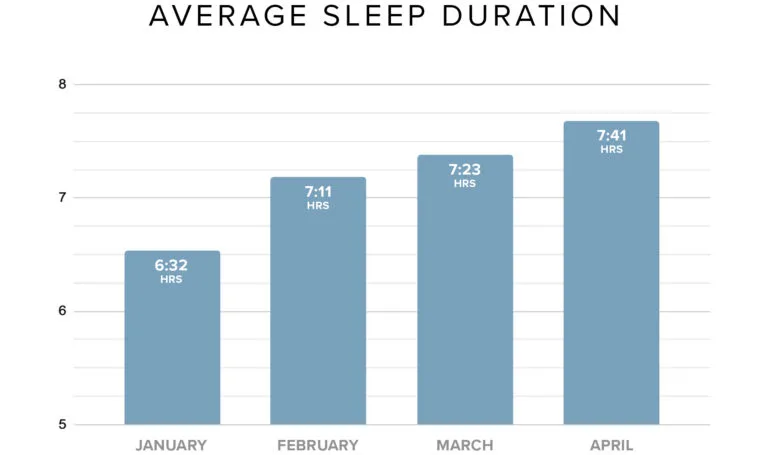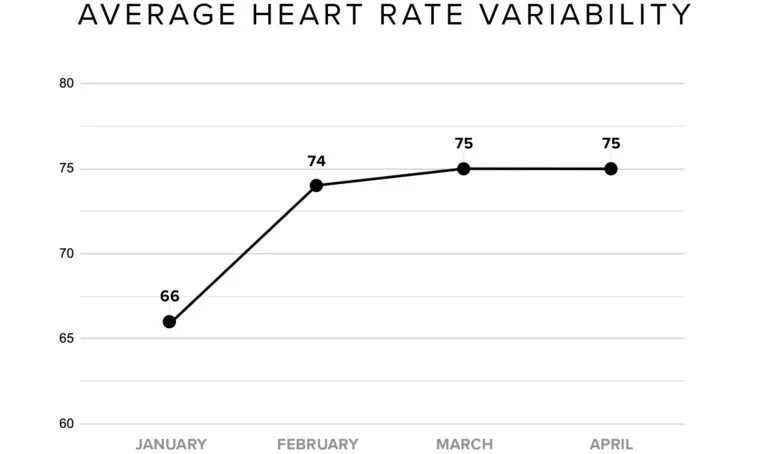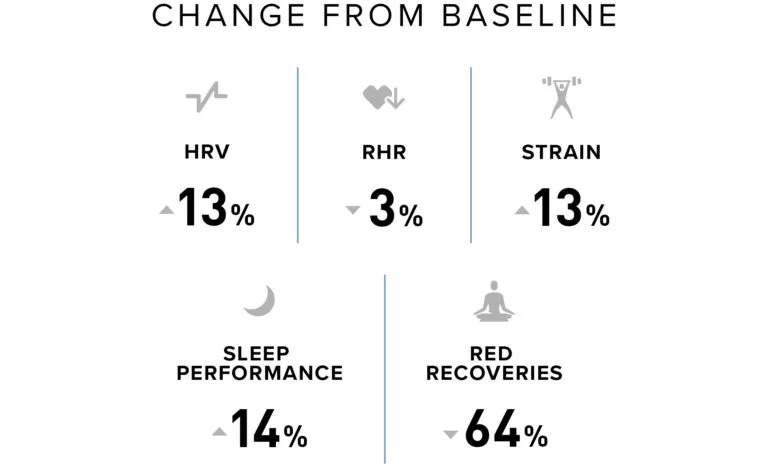Topics
- Article
- Research Studies
A Case Study at St. Paul’s: The Ability of WHOOP to Transform High School Sleep Habits

We donated WHOOP straps to the St. Paul's school to discover what happens when students are empowered with 24/7 access to their biometric data.
One of the best parts about being the CEO of WHOOP is hearing how our platform helps our members. Increasingly, I’ve received emails and notes from parents of some of our younger WHOOP members telling me that WHOOP has transformed their children’s sleep habits, enhancing their performance in the classroom and during their extracurricular pursuits. It comes as no surprise that high school students are in desperate need of sleep. While the American Academy of Sleep Medicine recommends that teenagers get 10 to 12 hours of sleep per night, a CDC report found that about two-thirds of American high school students reported sleeping less than 8 hours per night on school nights, even though sleep is crucial at this stage of development. Teenagers that fail to get enough sleep are at a higher risk of diabetes, obesity, and problems with attention. Stanford Medical School has labeled teenagers’ sleep deprivation an epidemic. The notes I received from WHOOP parents piqued my curiosity. I wanted to investigate how much of a difference WHOOP could make in high school students’ lives. I decided to contact my own alma mater, St. Paul’s in Concord, NH, to see if the school might be interested in partnering for a case study.
Case Study at St. Paul's
St. Paul’s was the perfect location to launch a study--and I’m not saying that just because I’m a proud alum. The boarding school provided a unique, controlled environment for our investigation. Based on a 2,000-acre campus in New Hampshire, St. Paul’s is by its nature inherently secluded. Unlike some independent schools, all of St. Paul’s students are boarding students and there are no parents on campus. Additionally, the COVID-19 pandemic helped standardize the student experience even further. While students were still able to participate in athletics, they were required to stay on campus during the school year. Despite the ideal conditions, I was also hesitant. Although I had a very positive experience at St. Paul’s, I know that parents are often reluctant to send their kids to boarding schools in part because they are afraid their children will never go to bed or develop unhealthy lifestyles. Conventional wisdom says that an environment without parents would make it even less likely that a high school student achieves their sleep goals. Could WHOOP effectively encourage kids to sleep more even in the absence of their parents’ direct oversight? We sought to answer that question. In January, we donated WHOOP straps to all students, faculty, and staff members at St. Paul’s. We had no conditions, and we didn’t provide any guidance to participants or encourage them to change or modify their behavior. While individuals’ data was completely private, we offered students the opportunity to share their data through WHOOP Teams. In all, 375 students granted us access to their WHOOP metrics, and the results were astounding.
What We Learned
By the end of four months, each student on average slept an hour more. Over the course of the semester, every month, their sleep improved: Initially 6:32 in January, then 7:11 in February, 7:23 in March, and finally 7:41 in April. Perhaps most importantly, the time students spent in REM and deep sleep both increased significantly.

While wearing WHOOP, students’ sleep quickly increased significantly.
In a sign of how powerful these changes were, the students’ “red recovery days”--a WHOOP metric that signals a body is stressed or fatigued and in need of recovery--decreased by 64 percent on average. It’s not surprising that students’ increase in sleep was also accompanied by a 16 percent increase in their average heart rate variability, an indicator of the body’s ability to adapt to physical, mental, and emotional stress. Their average resting heart rate also dropped by three percent, from 58 beats per minute to 56 bpm by April.

Heart rate variability helps determine how ready someone’s body is to perform. As the St. Paul’s students used WHOOP, their HRV increased, highlighting an enhanced ability to respond to various stressors.
Additionally, students’ strain during the day increased by 13 percent on average as WHOOP coaching combined with their increased sleep enabled them to perform at a higher level while awake.

After four months, the students experienced significant improvements in their ability to recover and perform.
St. Paul’s goes to great lengths to make sure its students have the tools they need to properly recover. But it’s worth noting that during this study, neither WHOOP nor the school provided students with any interventions like blackout curtains or altered diets to influence their sleep habits. Since they attended a boarding school, the students also didn’t have their parents providing direct oversight of their sleep schedule. They simply wore WHOOP, monitored their own data, and experienced improvements across the board. Teenage years can be stressful enough, even when high schoolers get a full night’s sleep. I am glad that WHOOP could help a cohort of students at my old stomping grounds, and we’re focused on expanding our reach to even more young people, especially as they prepare for another school year to begin soon. Learn More: Case Study in Student Sleep and Behavior Change on WHOOP The products and services of WHOOP are not medical devices and should not be used as a substitute for professional medical advice, diagnosis or treatment. All content available through the products and services of WHOOP is for general informational purposes only.